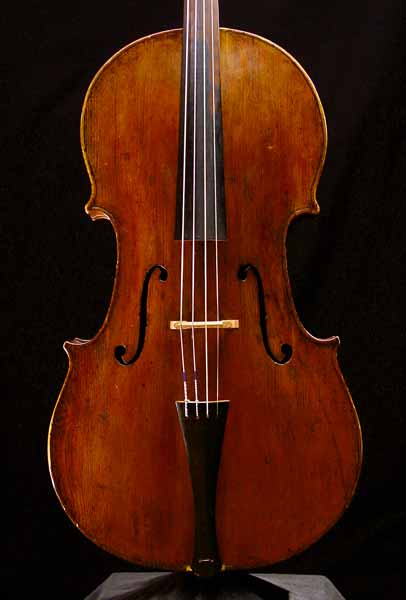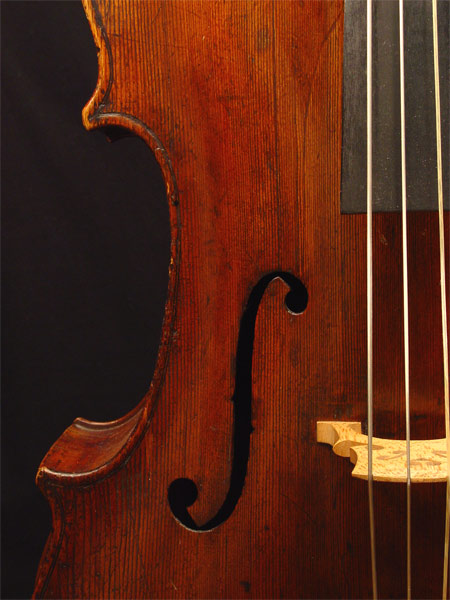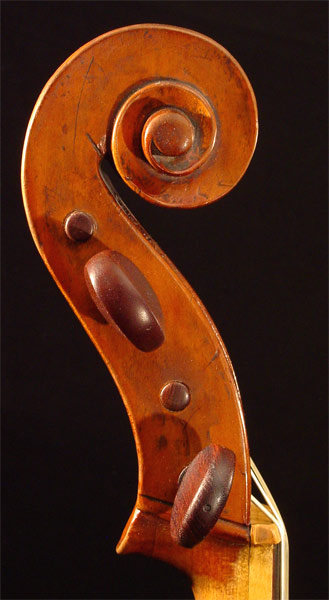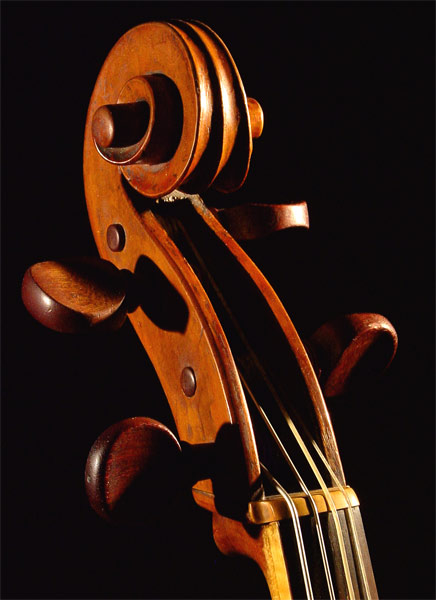Violoncello
label Ramon Fernan / dez Oviedo 1640, North Italian, c.a. 1760
Catalog 56. Violoncello – North Italian, ca. 1760
 |
 |
 |
|
 |
 |
Although judging from the sound this instrument is one of the finest in the collection, the experts are in disagreement as to its origin. Eric Blot (Cremona) claims that the wood used for the back and ribs is a particular species of maple from the Appennine Mountains in central Italy called oppio, thus corroborating the attribution to North Italy ca. 1720 by Charles Beare (London).
Nevertheless other experts have claimed to identify the wood of the back as one of the following: oppio, carpino, willow, cherry, pear or apple. All of these woods are known to have been used for the construction of violoncellos and basses.
At present this violoncello is on permanent loan to Lúcia Krommer, Pecs, Hungary, who is a principal member of the Orpheon Consort. However she also uses the Anton Posch violoncello and the Nikolaus Leidolff, as well as a number of the violas da gamba of the collection at will!

Label (probably fictitious): Ramon Fernan / dez Oviedo 1640
The spurious label, identifying this instrument as a Spanish production (city of Oviedo) from the middle of the 17th Century, can be dismissed on the basis of the results of dendrochronology. The youngest ring on the belly comes from the year 1755, yielding a problable date of construction of 1758-60.
Dendrochronological analysis
|
Bericht über die dendrochronologische Untersuchung einer
Cellodecke Italienisch (Instrumentenzettel: Ramon Fernan dez. Oviedo 1640) Bei der zweiteiligen Decke wurden auf der Diskantseite 181 Jahrringe und auf der Bassseite 128 Jahrringe gemessen und mit einer Fichtenchronologie für den Bereich Alpen datiert. Dabei konnte die Diskantseite zwischen 1572 und 1752 und die Basseite zwischen 1628 und 1755 eingeordnet werden. Somit stammt der jüngste auf der Decke gemessene Jahrring aus dem Jahre 1755. Baß- und Diskantseite stammen von demselben Baum. Bei einer minimalen Lagerzeit des Holzes von einem Jahr kann die Decke frühestens ab 1756 entstanden sein. i.A. Micha Beuting Prof. Dr. Peter Klein |
Report on the dendrochronological analysis of a
cello top, Italian (label: Ramon Fernan / dez Oviedo 1640)
On the two-part front were measured 181year-rings on the treble side and 128 year-rings on the bass side and were dated with a spruce chronology for the Alpine region. Thus the treble side could be dated between 1572 and 1752 and the bass side between 1628 and 1755. Therefore the youngest year-ring present on the front comes from the year 1755. The bass and the treble side came from the same tree. Considering a minimal time for curing the wood of one year, the front could have been made in 1756 at the earliest. Micha Beuting, on behalf of Prof. Dr. Peter Klein |
| Dendrochronology: | bass: 1755-1628 | treble: 1752-1572 |
Dendrochronology explained, with the complete findings!
| Body length | 715 mm |
|
Upper width
|
335 mm |
| Middle width | 228 mm |
| Lower width | 442 mm |
| Rib height | 104 mm |
| String length | 690 mm |